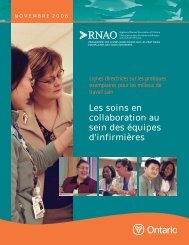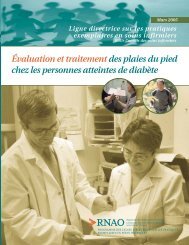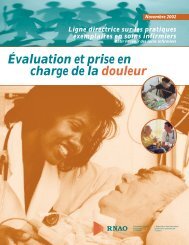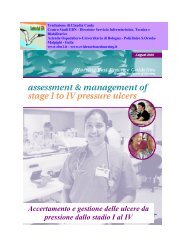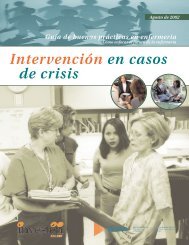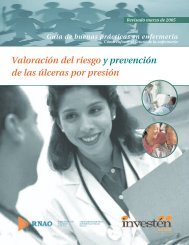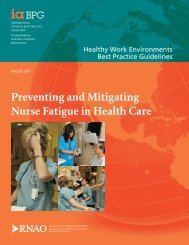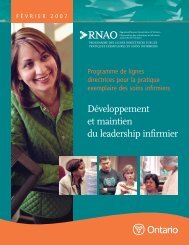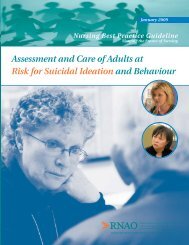Reducing Foot Complications for People with Diabetes - Registered ...
Reducing Foot Complications for People with Diabetes - Registered ...
Reducing Foot Complications for People with Diabetes - Registered ...
You also want an ePaper? Increase the reach of your titles
YUMPU automatically turns print PDFs into web optimized ePapers that Google loves.
<strong>Reducing</strong> <strong>Foot</strong> <strong>Complications</strong> <strong>for</strong> <strong>People</strong> <strong>with</strong> <strong>Diabetes</strong><br />
18<br />
At a later date, the panel was able to identify one additional existing guideline that was also<br />
added <strong>for</strong> the purpose of ensuring content clarity as well as currency of the recommendations.<br />
This fifth guideline was:<br />
Hutchinson, A. et al. (2000). Clinical guidelines and evidence review <strong>for</strong> type 2 diabetes:<br />
Prevention and management of foot problems. Royal College of General Practitioners.<br />
[Online]. Available: www.rcgp.org.uk/rcgp/clinspec/guidelines/diabetes/index.asp<br />
After reviewing the existing guidelines, the panel decided to focus the scope of their work on<br />
reducing the risk of foot complications <strong>for</strong> people <strong>with</strong> diabetes. This preventable problem<br />
is serious as well as costly, and there is potential <strong>for</strong> all nurses to contribute to risk reduction.<br />
A second phase to the literature search was required, as many of the issues relevant <strong>for</strong> nursing<br />
practice were not sufficiently addressed in the existing guidelines. A critique of systematic<br />
review articles, technical reviews, and other pertinent literature was conducted to update<br />
and/or validate recommendations in the existing guidelines.<br />
The first strategy undertaken to develop the recommendations was a review of the literature<br />
to identify risk factors <strong>for</strong> diabetes foot complications that were consistently supported by<br />
research studies utilizing strong methodologies. Once the panel identified the risk factors,<br />
small task groups were <strong>for</strong>med to further study each of the risk indicators. The small groups<br />
conducted an in-depth search <strong>for</strong> evidence to validate the risk factors, as well as to identify<br />
evidence-based processes <strong>for</strong> risk assessment. The sub-groups further identified assessment<br />
tools, mechanisms, and/or educational resources <strong>for</strong> each of the risk factors. Through an iterative<br />
process of discussion and validation, consensus was reached on the final draft recommendations<br />
<strong>for</strong> the guideline.<br />
This draft document was submitted to a set of external stakeholders <strong>for</strong> review and feedback –<br />
a listing and acknowledgement of these reviewers is provided at the front of this document.<br />
Stakeholders represented various health care professional groups, clients and families, as<br />
well as professional associations. External stakeholders were asked to provide feedback using<br />
a questionnaire consisting of open and closed-ended questions. The results were compiled<br />
and reviewed by the development panel – discussion and consensus resulted in revisions to<br />
the draft document prior to pilot testing.



